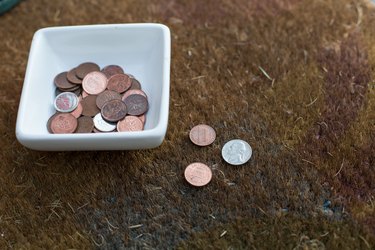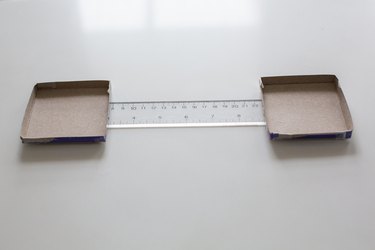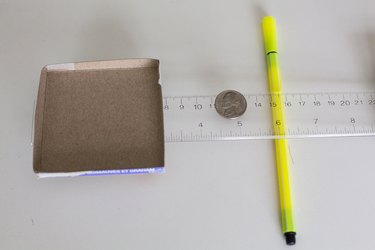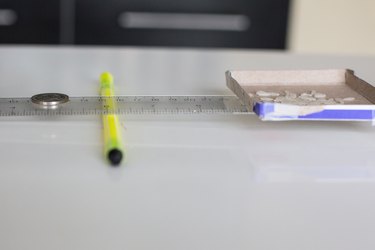Things You'll Need
Light cardboard
Scissors
Ruler
Glue
Pencil
Coins

A homemade scale will not be as precise as an expensive digital scale, but it can give you a fairly accurate idea of the weight of a small object. It's easy to construct scales that measure the unknown weight of small items against the known weight of another item -- in this case, coins. That eliminates the need for a graduations on the scale.
Step 1

Cut out two 3-by-3 inch squares of cardboard. These will be the trays to hold the items being weighed and the counterweight. Each square must be of equal size.
Video of the Day
Step 2

Place one square on each end of the ruler. Use the side of the ruler with measurements displayed. Line the squares up evenly and glue in place. Allow the glue to dry thoroughly.
Step 3

Place the ruler on top of the pencil. Use the measurement markings on the ruler to ensure the pencil is directly in the middle. Balance the ruler on the pencil. If one side is heavier, trim the cardboard until the scales are balanced.
Step 4

Place a coin one on tray and the item you're weighing on the other. Calculate the weight by placing coins on one end until the scales balance. Once the scales are balanced, the weight of the object is equal to the weight of the coins.
Step 5

Achieve a specific weight by using a coin or coins equal to the amount of weight you need. Multiply the weight of the coin by 6 inches. Divide this figure by 5. The quotient will tell you where to place the coin on the ruler. If you use a nickel, your answer would be 4.8 and you would place the coin on the 4.8 inch mark on the ruler.
Step 6

Add the substance to the tray on the other side of the ruler until the scale is balanced. Now you have 5 g (or whatever weight you used) of the substance. Use this method to weigh herbs, spices, powders, or any other lightweight item you need to measure.
Tip
An American nickel weighs 5 g. An American penny weighs 2.5 g. These are the easiest coins to work with. Quarters or dimes may be used if necessary. A quarter weighs 5.7 g and a dime weighs 2.2 g. Use coins that have been manufactured in the past 5 years and haven't been damaged or worn. This ensures a more accurate reading on the scales.
Video of the Day